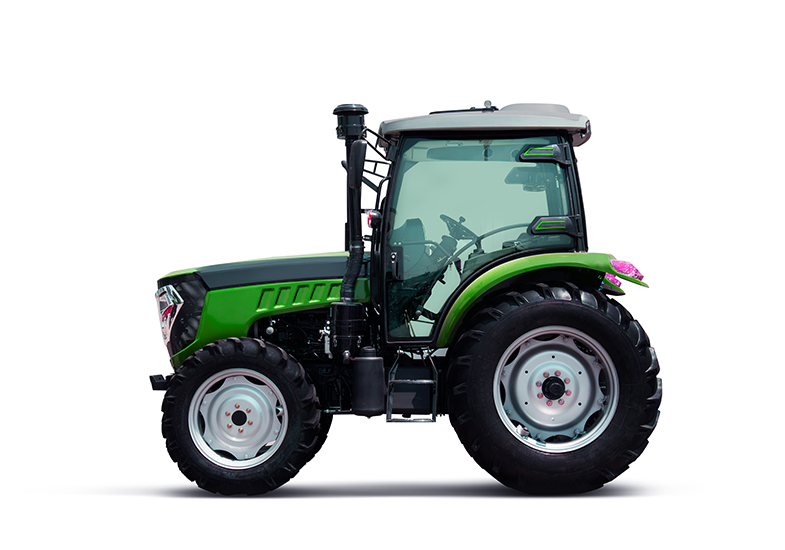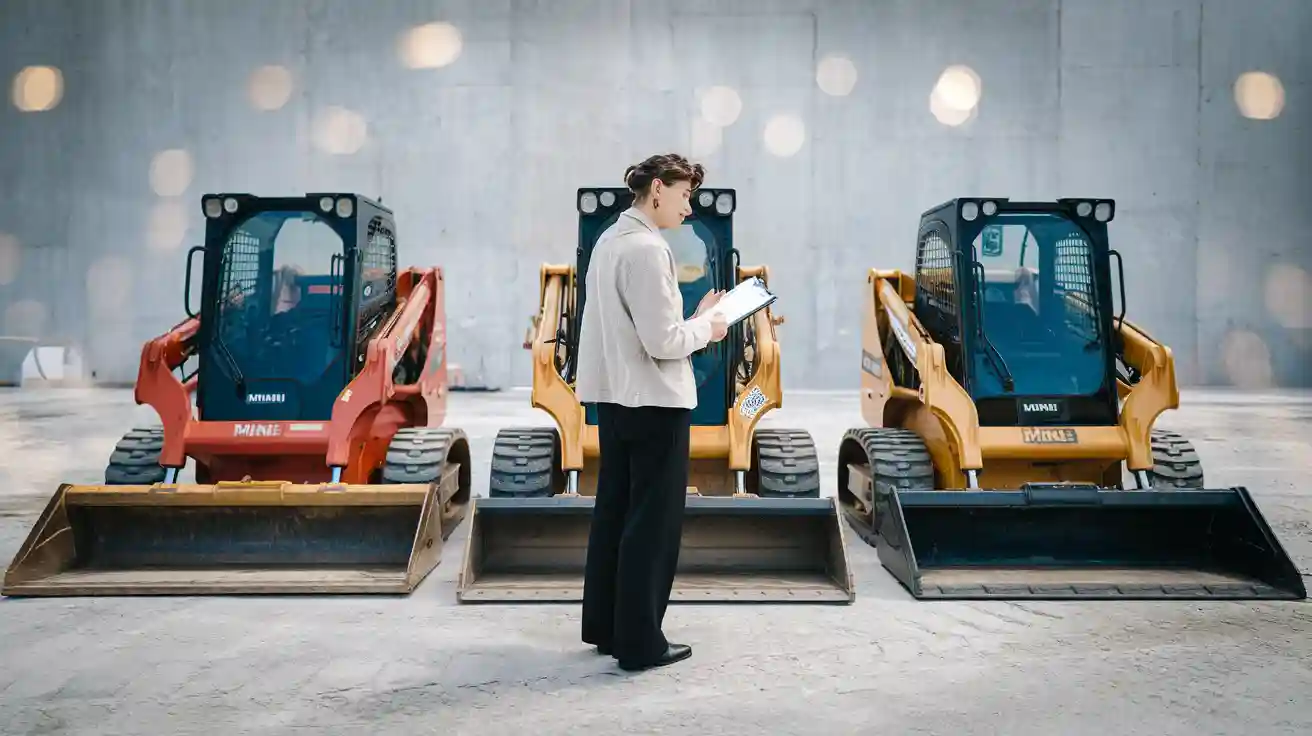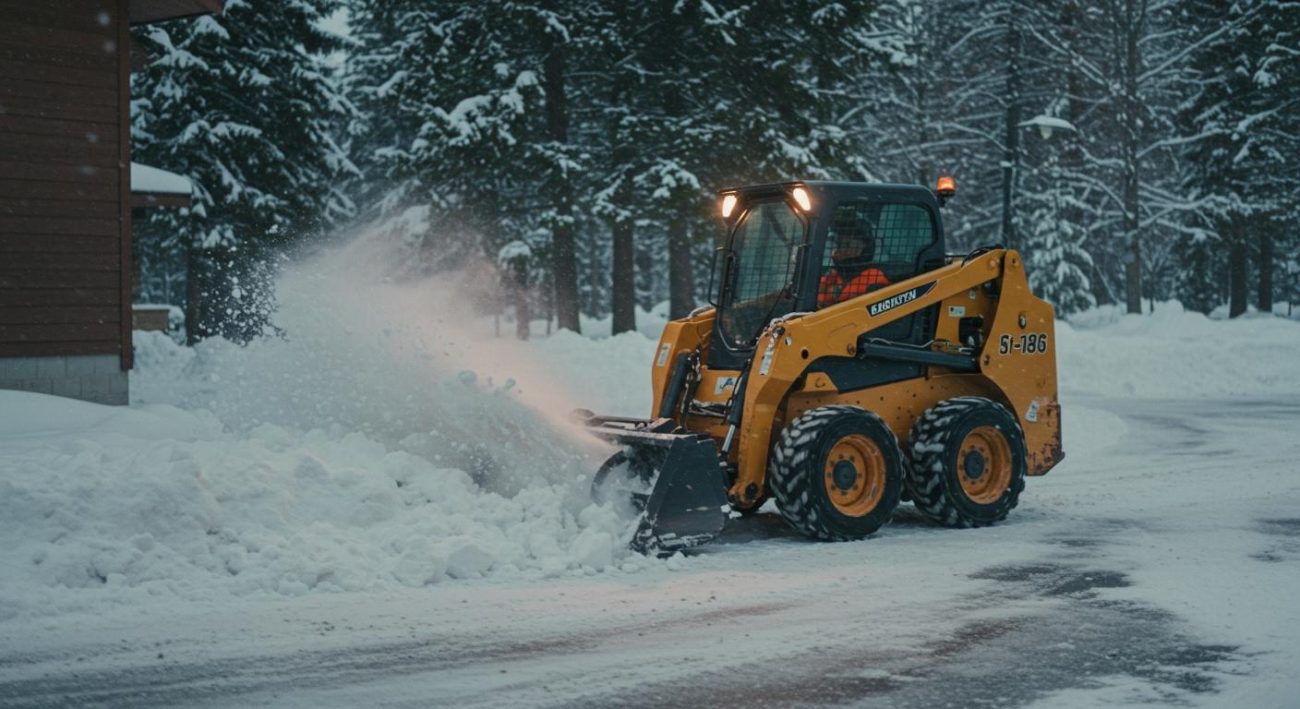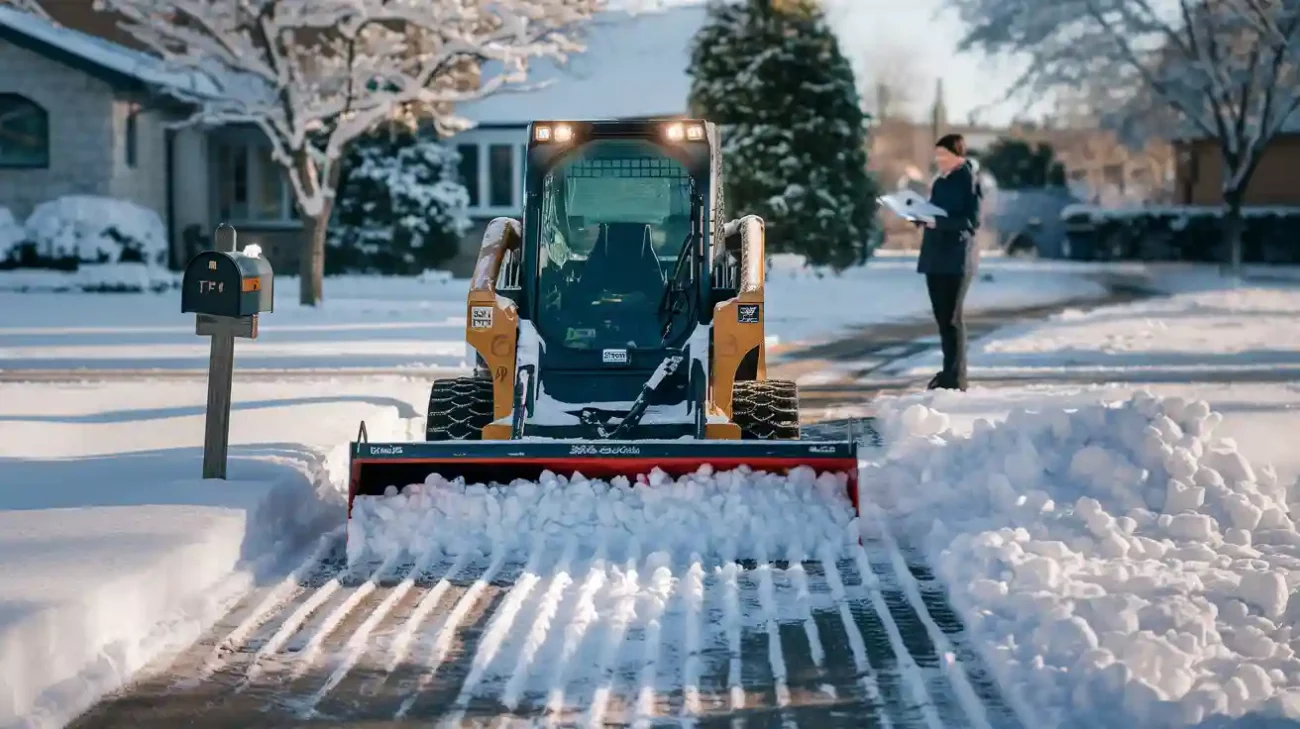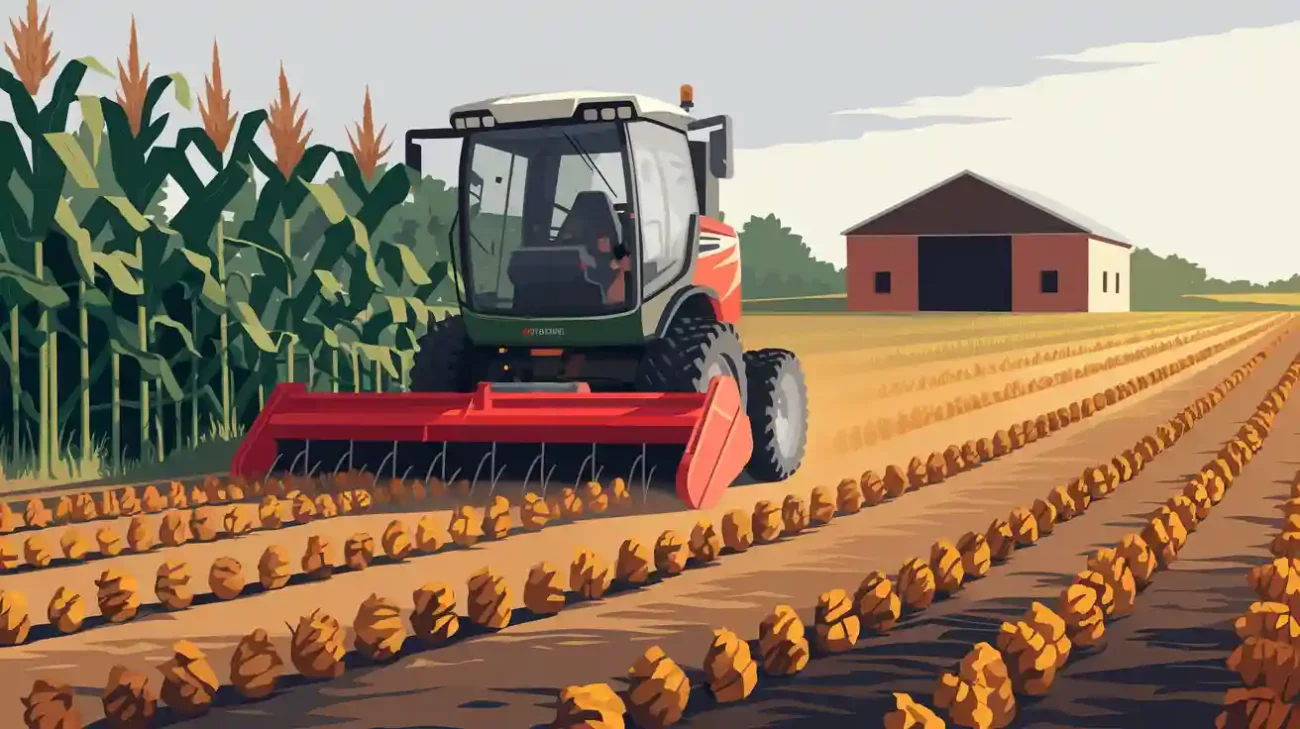To choose the best mini skid steer, you should match its operating weight and lifting capacity to your job, site, and attachment needs. Picking the right weight class affects how well you can move in tight spaces, how much you can lift, and how much you spend on fuel and maintenance.
A well-matched mini skid steer fits your work area, handles the loads you need, and works with many attachments.
Compact machines help you finish projects faster and save money by reducing labor and operating costs.
DeepKron offers a full range of mini skid steers designed to help you work efficiently, no matter the size of your project.
Key Takeaways
Pick a mini skid steer weight class that matches your job size. Think about how much you need to lift and how much space you have. This helps you work safely and get the job done well.
Smaller machines are easy to move in small spaces and cost less. Bigger machines have more power and can lift heavier things for tough jobs.
Always think about the attachments you will use and how much they weigh. This keeps your machine steady and safe when you use it.
Look at your worksite’s entrance, the ground, and how you will move the machine. This helps you avoid waiting and spending more money.
Use the checklist to help you decide, and ask a dealer if you are not sure. This helps you find the best mini skid steer for your work and your budget.
Why Weight Class Matters
Performance Factors
Weight class is important for how your machine works. Heavy machines have stronger engines. They can lift bigger loads. Light machines are easier to move in small spaces. They also cost less money. You should pick the weight class that fits your job.
Here is a table that shows how weight class changes features:
Weight Class (tons) | Engine Power (HP) | Load Capacity (lbs) | Maneuverability | Price (USD) |
|---|---|---|---|---|
0.7 | RATO engine | ~484 | High (compact, lighter) | ~$6,000 |
1.0 | RATO engine | 484 | Moderate | ~$6,598-$8,249 |
1.25 | RATO engine | Higher | Lower (heavier) | ~$13,000 |
1.4 | Gasoline engine | Higher | Lower (heavier) | ~$14,520 |
When weight goes up, engine power and load capacity go up too. Heavy machines do bigger jobs. They may not fit in small places. Light machines move easily and cost less. They cannot lift as much.
Experts say the right weight class helps you work better. Heavy machines finish big jobs faster. They move more material on large sites. Light machines fit through gates and work in small yards. They do not hurt the ground as much. Picking the right size helps you work quickly and safely.
Stability & Safety
Stability and safety change with weight class. Small machines move easily but can tip over. This happens if you lift too much or use heavy attachments. You need to be careful with light machines. Training teaches you how to use them safely.
Small machines (1,500–2,900 lbs) turn easily but can tip if not careful.
Medium-frame models (4,000–6,000 lbs) are more stable and lift more.
Large-frame machines (6,000–10,000+ lbs) are the most stable and strong but can hurt soft ground.
Attachments change safety too. Heavy attachments move the center of gravity forward. This makes tipping more likely. Always check lifting limits. Use the right attachment for your machine’s size.
Tip: Pick the weight class that matches your job. Get training before you use any machine. This keeps you safe and helps you finish your work.
Mini Skid Steer Weight Classes
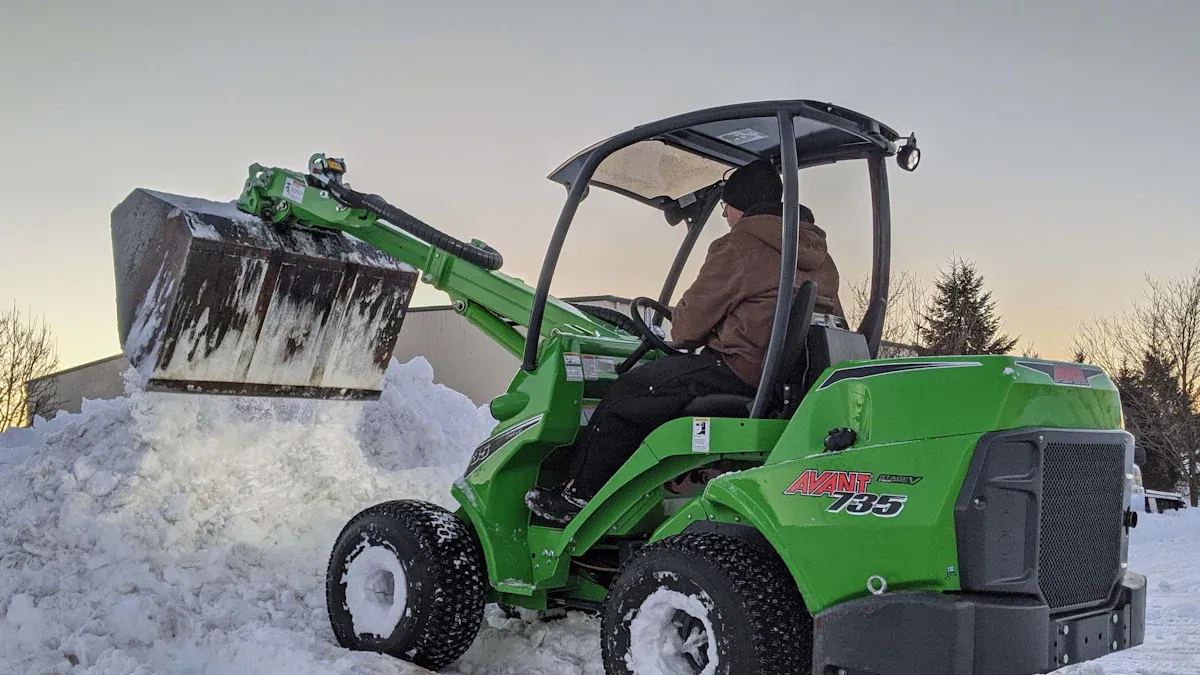
Choosing the right mini skid steer weight class helps you match your machine to your job. Each class has different strengths. You can see how they compare in the table below:
Mini Skid Steer Class | Operating Weight Range (lbs) | Rated Operating Capacity Range (lbs) | Example DeepKron Model |
|---|---|---|---|
Small | 2,900 – 6,000 | 700 – 1,750 | DK300 |
Medium | 6,000 – 8,000 | 1,750 – 2,200 | DK500 |
Large | 8,000 – 12,000 | 2,200 – 4,200 | DK700 |
Small Class
Small class mini skid steers give you the most maneuverability. You can use them in tight spaces, like backyards or narrow gates. These machines usually weigh between 2,900 and 6,000 pounds. Their lifting capacity ranges from 700 to 1,750 pounds. The DeepKron DK300 fits this class. It weighs 1,984 pounds and lifts up to 551 pounds. You can move it easily and use it for light jobs.
Key features of small class mini skid steers:
Compact size lets you work in small yards or gardens.
Stand-on operation gives you good visibility.
Tracks provide strong grip and protect the ground.
You can use many attachments, such as buckets, augers, and trenchers.
Common uses:
Landscaping, grading, and planting.
Cleaning barns or feeding animals.
Moving mulch, soil, or small debris.
Property maintenance and snow removal.
Note: Small class machines are easy to transport and cost less to own. You can learn to use them quickly, even if you have little experience.
Medium Class
Medium class mini skid steers offer more power and lifting ability. You can use them on job sites that need extra strength but still have some space limits. These machines weigh between 6,000 and 8,000 pounds. Their lifting capacity goes from 1,750 to 2,200 pounds. The DeepKron DK500 is a good example. It weighs 3,306 pounds and lifts up to 881 pounds. You get a balance of strength and maneuverability.
Why choose a medium class mini skid steer?
You need to lift heavier materials, like gravel or logs.
Your job site is not too tight, but not wide open.
You want to use more powerful attachments.
You need a machine that works for both landscaping and construction.
Typical jobs:
Moving heavy debris.
Digging and trenching for utilities.
Loading trucks with soil or sand.
Medium-scale construction or renovation.
Tip: Medium class machines give you more options. You can handle bigger jobs without losing too much maneuverability.
Large Class
Large class mini skid steers deliver the most power and capacity. You use them for tough jobs and big projects. These machines weigh between 8,000 and 12,000 pounds. Their lifting capacity ranges from 2,200 to 4,200 pounds. The DeepKron DK700 stands out in this class. It weighs 5,512 pounds and lifts up to 1,719 pounds. You get a strong diesel engine and the ability to use many heavy-duty attachments.
Best uses for large class mini skid steers:
Construction site cleanup.
Heavy earthmoving and grading.
Moving large piles of material.
Supporting other machines on big jobs.
Industries that use large class machines:
Construction and demolition.
Landscaping for large properties.
Agriculture and waste management.
Urban development and roadwork.
Note: Large class machines help you finish demanding tasks faster. You can use them with many attachments, making them very versatile.
You should always match your mini skid steer to your job needs. DeepKron models fit well within industry standards for each class. You can find a machine that works for your site, your lifting needs, and your budget.
Choosing the Right Weight Class
Worksite & Access
When you choose a mini skid steer, start by looking at your worksite. Small spaces, narrow gates, or crowded yards need a compact machine. You want a loader that fits through standard doorways or four-foot gates. DeepKron models like the DK300 have a compact size, so you can work in tight areas such as gardens, patios, or even inside buildings. Their design lets you spin and turn easily, which helps you finish jobs faster in small places.
Check the width and height of your worksite entrances.
Think about obstacles like trees, fences, or walls.
Make sure the machine can move around without getting stuck.
If you need to transport your loader often, pick a model that fits on a regular trailer. DeepKron loaders are easy to move and store, so you do not need special permits or storage.
Tip: Mini skid steers work best in places where big machines cannot go. Their small size protects lawns and gardens from damage.
Lifting Needs
You must match the lifting capacity of your mini skid steer to your job. If you move heavy soil, rocks, or pallets, you need a machine with a higher rated capacity. Lighter models, like the DK300, handle small loads and work well for landscaping or property care. Medium models, such as the DK500, lift heavier items and suit construction or renovation jobs.
Weight Class | Weight Range (lbs) | Lifting Capacity & Stability | Suitable Tasks & Benefits |
|---|---|---|---|
Small Mini Skid Steer | Lower lifting capacity, lighter weight, high maneuverability | Light lifting, residential, indoor projects, delicate surfaces | |
Medium Mini Skid Steer | 2,500 – 4,000 | Higher lifting capacity, more power and stability | Earthmoving, site work, handling heavier attachments |
Always include the weight of attachments when you plan your lifts. Heavy attachments need a larger, heavier machine to stay stable. If you lift more than your machine can handle, you risk tipping over. DeepKron loaders help you lift safely by balancing power and stability.
Note: OSHA recommends you check both the load and attachment weight to keep your work safe.
Attachments
Attachments make your mini skid steer more useful. You can add buckets, augers, trenchers, or pallet forks. Before you choose a machine, check if it supports the attachments you need. Look at the hydraulic flow and pressure. Some tools, like trenchers or mulchers, need high-flow hydraulics. DeepKron models offer strong hydraulic systems and standard mounting plates, so you can switch attachments quickly.
Make sure the attachment fits the mounting plate.
Check that the hydraulic flow matches the attachment’s needs.
Do not use attachments that are too heavy for your loader.
Use counterweights if you add heavy tools to keep your machine stable.
Tip: Newer mini skid steers, like those from DeepKron, support a wide range of attachments. This gives you more options for every job.
Terrain & Frequency
The ground at your worksite and how often you use your loader matter. Soft or muddy ground needs a tracked mini skid steer. Tracks spread the weight and protect the surface. DeepKron loaders use tracks for better grip and less ground damage. If you work on hard surfaces, wheels may work better.
How often you use your loader also affects your choice. If you use it every day, pick a model with more horsepower and strong parts. The DK700, for example, is built for heavy, frequent use and tough terrain. For light or occasional jobs, a smaller model like the DK300 saves money and is easier to maintain.
Lifting Capacity | Maneuverability | Common Applications | |
|---|---|---|---|
Compact | 800 – 1,500 lbs | Very High | Landscaping, Small Farms |
Medium | 1,500 – 2,500 lbs | Moderate | Construction, Site Cleanup |
Large | 2,500 – 4,000 lbs | Low | Heavy Construction, Mining |
Note: Choose a mini skid steer that matches your ground conditions and how often you plan to use it. This helps you avoid downtime and keeps your work moving.
Operating Weight & Mini Skid Steer Performance
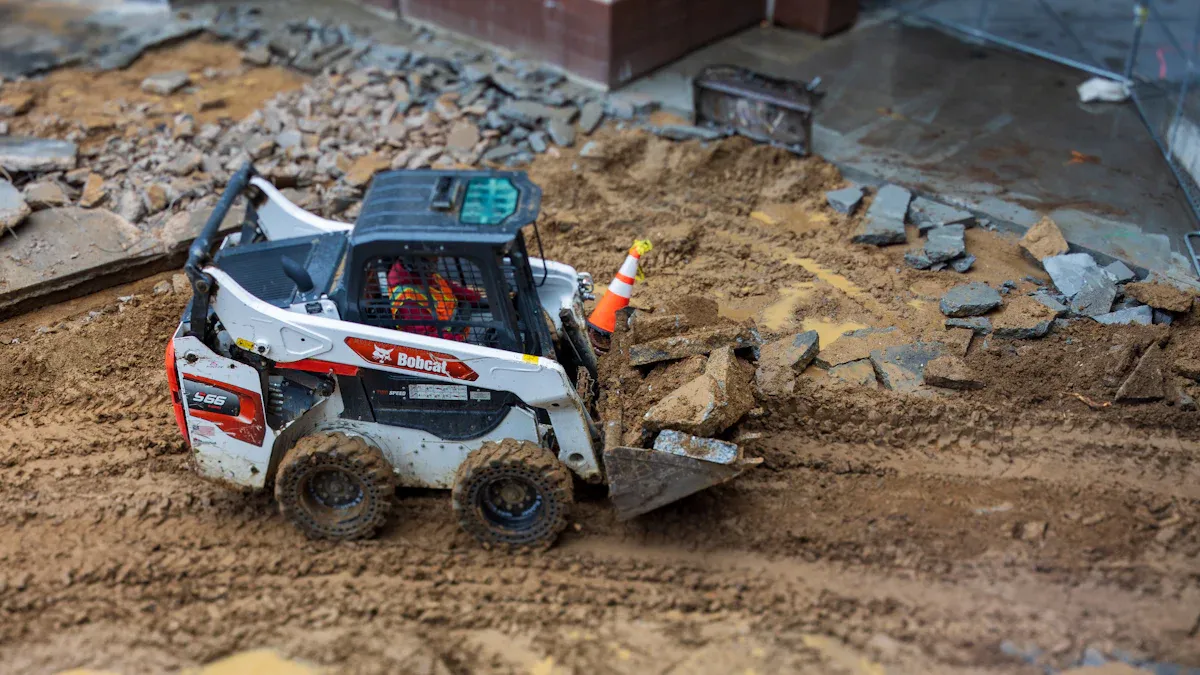
Maneuverability
Operating weight plays a big role in how easily you can move your mini skid steer around a job site. Lighter machines, like the DeepKron DK300, let you work in tight spaces such as small backyards, narrow gates, or even inside buildings. You can fit through doorways as narrow as 36 inches and turn easily in crowded areas. Heavier models, like the DK700, give you more stability but may not fit in very tight spots.
Here is a table to show how weight affects maneuverability:
Weight Range (lbs) | Maneuverability & Use in Confined Spaces |
|---|---|
1,500 – 2,900 | Fits through narrow gates and doorways; great for small yards and indoor work. |
2,500+ | More stable but less agile in tight areas; better for open sites. |
Lighter mini skid steers also put less pressure on the ground. This means you can work on lawns or soft surfaces without leaving deep marks. DeepKron models with tracks help spread the weight, so you protect delicate ground while still getting the job done.
Transport & Cost
The operating weight of your mini skid steer affects how you move it from one place to another and how much you spend. Lighter machines, like the DK300, are easier to load onto a trailer and cost less to rent or own. You can use a regular trailer for transport, which saves time and money. Heavier models, such as the DK700, need bigger trailers and stronger vehicles for safe transport.
Here is a table that shows typical costs and uses by weight class:
Weight Class | Weight Range (lbs) | Rental Cost (per day) | Typical Use Cases |
|---|---|---|---|
Small-frame Skid Steer | Under 4,000 | $150 – $300 | Landscaping, light-duty tasks |
Medium-frame Skid Steer | 4,000 – 6,000 | $200 – $400 | Construction, agriculture |
Large-frame Skid Steer | 6,000 – 10,000+ | $300 – $600 | Excavation, demolition |
When you choose a mini skid steer, think about both the job and the cost. Lighter machines save money on fuel and transport. Heavier machines cost more but handle bigger jobs. DeepKron offers models in every class, so you can pick the right balance for your needs.
Decision Checklist
Step-by-Step Guide
Choosing the right weight class for your loader involves several important steps. Follow this checklist to make a confident decision:
Identify Your Lifting Needs
Start by listing the materials you move most often. Check their typical weight. Make sure the machine’s rated operating capacity matches or exceeds these loads.Check Transportation Requirements
Confirm that your trailer or truck can safely move the loader. Consider the machine’s weight, including fuel and attachments.Assess Job Site Conditions
Look at the ground surface. Soft or muddy ground may need tracks. Hard surfaces may work better with wheels. Think about possible ground damage.Evaluate Access and Space
Measure gates, doorways, and paths at your site. Smaller machines fit better in tight spaces. Larger machines need more room to turn and operate.Review Attachment Compatibility
List the attachments you plan to use. Make sure the loader supports them. Check hydraulic flow and pressure if you need high-powered tools.Consider Lift Height and Path
Decide if you need to lift loads high (vertical lift) or mostly work at ground level (radial lift). This affects productivity and safety.Balance Budget and Needs
Choose the smallest loader that meets your needs. This helps you save money on purchase and operation.
Tip: Always check both the rated operating capacity and the height you need to lift. Both matter for safe and efficient work.
When to Consult a Dealer
Sometimes, you may need expert advice before making a final choice. Consider reaching out to a dealer if:
You have unique job site challenges, such as steep slopes or very soft ground.
You need to use specialized attachments or tools.
You are unsure about the right lift type or machine size for your tasks.
You want to compare several models side by side.
You need help with financing, warranty, or after-sales support.
A dealer can help you test different machines, explain features, and answer questions about maintenance or upgrades. This support ensures you pick a loader that fits your work and budget.
Note: Consulting a dealer can save you time and prevent costly mistakes. Dealers know the latest models and can match you with the best solution for your needs.
Picking the right weight class means looking at machine size, how much it can lift, and what attachments you need. Here are some easy steps to follow:
Measure your work area and entrances.
Make sure the machine can lift and carry what you need.
Check if the machine’s hydraulics work with your attachments.
Think about size, how well it works, and your budget.
DeepKron has models with safety features, comfortable designs, and easy controls. You can try out machines to find the one that works for you. Use the checklist, talk to a dealer for help, and pick a machine that helps you finish your project.
FAQ
What weight class mini skid steer should I use for landscaping?
You should use a small or medium class mini skid steer for landscaping. These machines fit in tight spaces and protect lawns. DeepKron DK300 and DK500 work well for most landscaping jobs.
Can I use the same attachments on all DeepKron mini skid steers?
Most DeepKron mini skid steers use a standard mounting plate. You can use many attachments across models. Always check the attachment’s weight and hydraulic needs before use.
How do I know if my trailer can carry my mini skid steer?
Check your trailer’s weight rating. Add the mini skid steer’s operating weight and the attachment’s weight. Make sure the total is less than your trailer’s maximum load.
Do tracks or wheels work better for soft ground?
Tracks work better for soft or muddy ground. They spread the machine’s weight and protect the surface. DeepKron mini skid steers use tracks for better grip and less ground damage.
How often should I maintain my mini skid steer?
You should check fluids, tracks, and attachments before each use. Follow the maintenance schedule in your owner’s manual. Regular care keeps your machine safe and reliable.


